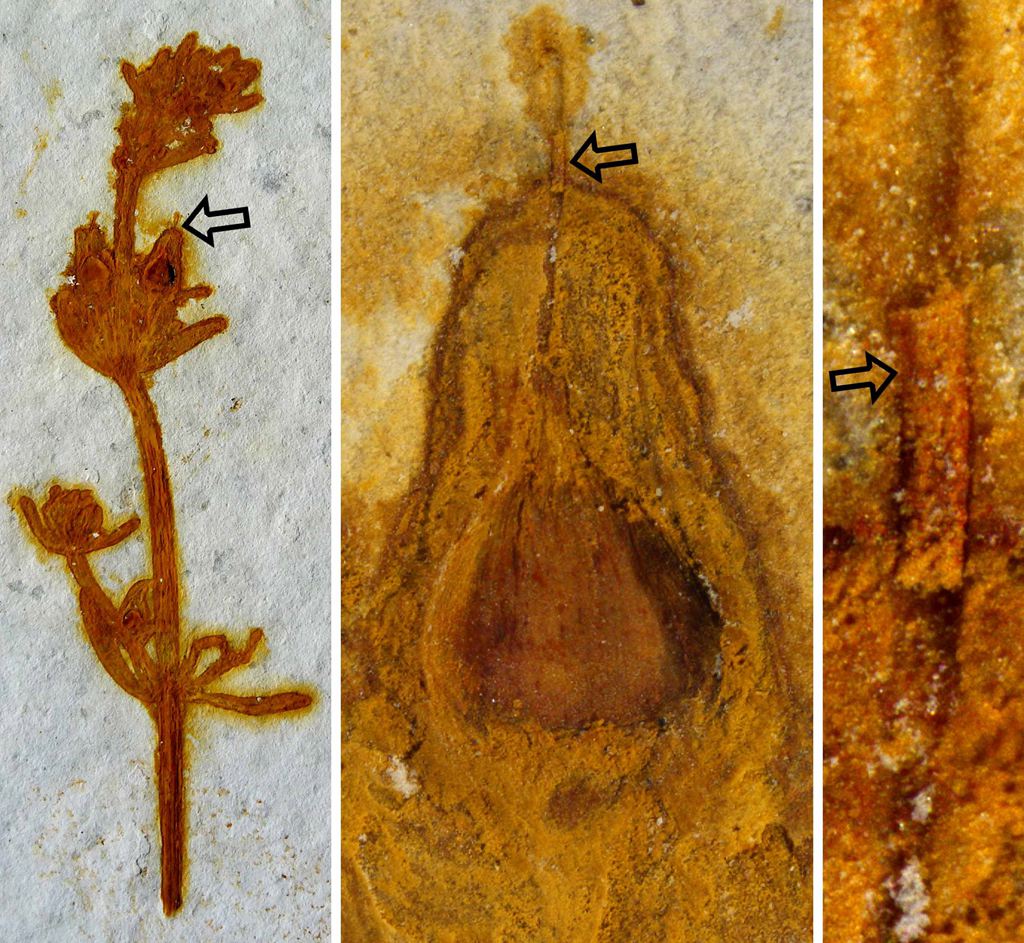
(Left) General view of the specimen. (Middle) Detailed view of the female unit arrowed in left figure, showing apical solid projection (arrow). (Right) Detailed view of the apical projection arrowed in middle figure, showing the three dimensionally preserved solid apical projection.
Angiosperms and gymnosperms are two well-separated groups in seed plants according to the current understanding. The huge gap between these two groups constitutes a serious threat against the Darwinism, which expects a continuous transitional series between them. The Lower Cretaceous Yixian Formation of Liaoning, China is famous for its megafossil angiosperms, including some early angiosperms and putative gnetalean plants.
Recently, Professor LIU Zhongjian from National Orchid Conservation Center of China and Professor WANG Xin from Nanjing Institute of Geology and Palaeontology, Chinese Academy of Sciences document another Ephedra-like fossil plant, Pseudoephedra n. gen. n. sp., from the Yixian Formation on the basis of light microscopic (LM) and scanning electron microscopic (SEM) observations. Although its general morphology demonstrates a great resemblance to Ephedra, the expected micropylar tube characteristic of Ephedra is missing in Pseudoephedra. Instead a solid projection is seen on the top of the female parts. Such a puzzling character combination makes Pseudoephedra perplexing in seed plant phylogeny. If put in Ephedraceae (Gnetales), Pseudoephedra would destroy the only synapomorphy (micropylar tube) of the BEG clade. If put in angiosperms, Pseudoephedra would bridge the formerly huge gap between gymnosperms and angiosperms. Apparently, further investigation is needed to clarify the position of Pseudoephedra.
Related information of this paper: Liu, Z.-J. and Wang, X., 2015. An enigmatic Ephedra-like fossil lacking micropylar tube from the Lower Cretaceous Yixian Formation of Liaoning, China. Palaeoworld.

